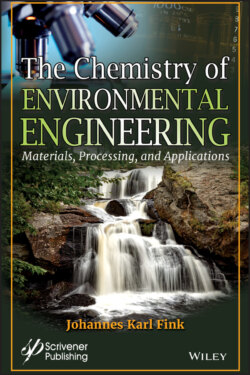Читать книгу The Chemistry of Environmental Engineering - Johannes Karl Fink - Страница 10
ОглавлениеPreface
Preface
This book focuses on the chemistry of environmental engineering and applications. Special attention is receiving the use of polymers in this field. Polymers can be created with special properties, such as viscoelasticity, interpenetrating networks, and others. Also, a polymer modified asphalt with special properties can be created. Further, another issue is the creation of polymers with special bacterial adhesion properties. The formation of reverse osmosis membranes that do not show biofouling are of importance for water purification procedures.
In another chapter, special processing methods are detailed, such as atom transfer radical polymerization, enzymatic polymerization, plasma treatment, and several other methods.
Recycling methods are now important environmental issues for several types of materials, such as PET Bottles, tire rubbers, asphalt compositions, and other engineering resins. Also, wastewater treatment has been detailed. Here, the types of contaminants, such as microplastics, organic dyes, pharmaceutical residues are described and also special methods for proper removal are detailed. Also the types of adsorbents, including also biosorbents are detailed.
Still another important issue for environmental engineering chemistry are pesticides. Here also the development and fabrication of special sensors for the detection of certain pesticides are detailed.
In a further special chapter, electrical uses are detailed. These include photovoltaic materials, solar cells, energy storage and dielectric applications, light emitting polymers, and fast charging batteries.
The recent issues of food engineering, such as food ingredient tracing, protein engineering, biosensors and electronic tongues have been detailed.
Finally, medical uses have been described. These fields include drug delivery, tissue engineering, porous coatings and also the special methods of fabrication of such materials.
The text focuses mainly on the literature of the past decade. Beyond education, this book will serve the needs of industry engineers and specialists who have only a passing contact with the plastics and composites industries but need to know more.
How to Use This Book
Utmost care has been taken to present reliable data. Because of the vast variety of material presented here, however, the text cannot be complete in all aspects, and it is recommended that the reader study the original literature for more complete information.
The reader should be aware that mostly US patents have been cited where available, but not the corresponding equivalent patents in other countries. For this reason, the author cannot assume responsibility for the completeness, validity or consequences of the use of the material presented herein. Every attempt has been made to identify trademarks; however, there were some that the author was unable to locate.
Index
There are three indices: an index of acronyms, an index ofchemicals, and a general index.
In the index of chemicals, compounds that occur extensively, e.g., “ace-tone,” are not included at every occurrence, but rather when they appear in an important context.
Acknowledgements
I am indebted to our university librarians, Dr. Christian Hasenhüttl, Margit Keshmiri, Friedrich Scheer, Christian Slamenik, Renate Tschabuschnig, and Elisabeth Groß for support in literature acquisition. I also want to express my gratitude to all the scientists who have carefully published their results concerning the topics dealt with herein. This book could not have been otherwise compiled.
Last, but not least, I want to thank the publisher, Martin Scrivener, for his abiding interest and help in the preparation of the text. In addition, my thanks go to Jean Markovic, who made the final copyedit with utmost care.
Johannes Fink
Leoben
